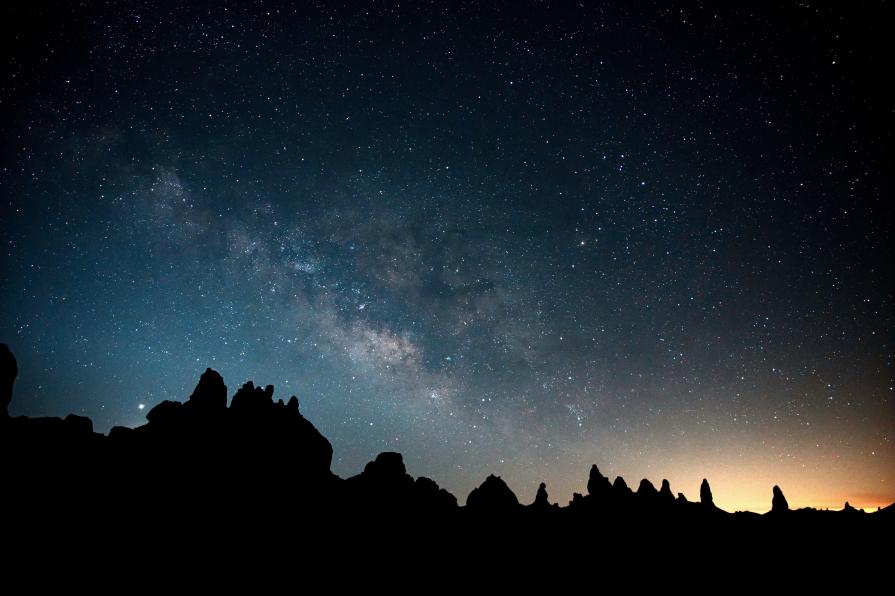Few will go to secluded places in the city to see a scattering of a thousand stars! But still, there are romantics who go to the end of the world, where you can look at the brightest constellations. This article is for them.

Atacama in Chile

The Atacama is known as one of the driest places on the planet, with minimal rainfall per year and clear and cloudless skies most of the time. This makes it possible to observe the stars almost all year round. Many observatories and lookout posts are located in the highlands, reducing the influence of atmospheric distortions and making the sky even more transparent. High plateaus such as Paranal and Chajnantor serve as sites for major astronomical observatories.
NamibRand is one of only 13 places in the world certified as a "Dark Sky Reserve" by the International Dark Sky Association (IDA) – meaning that light pollution is kept to a minimum, allowing you to observe the stars in their full glory.
Canary Islands in Spain

The islands are located in the subtropical zone, where clear skies are preserved for most of the year. At an altitude of more than 2000 meters above sea level, atmospheric conditions are very stable, providing excellent conditions for astronomical observations. The Canary Islands are home to some of the most famous observatories in the world: the Roque de los Muchachos Observatory in La Palma and the Teide Observatory in Tenerife, which enjoy unique observational conditions and are often open to tourists.
In Tenerife, at an altitude of more than 2400 meters above sea level, you will find the Teide Observatory, one of the most famous astronomical observatories in the world. There are excursions for tourists, where you can not only see the stars, but also learn more about astronomy. Mount Teide National Park, around the volcano of the same name, is one of the most popular stargazing spots in Tenerife. The elevation, the absence of light pollution and the unique lunar landscape create ideal conditions for night observations. It is also possible to join astronomical tours here, which include the use of telescopes and guides.
Sagarmatha in Nepal

Sagarmatha is a region in Nepal that includes Mount Everest and its surrounding mountain ranges. Not only does the area attract climbers from all over the world, but it is also a great place for stargazing due to its high-altitude location, clean air, and minimal light pollution. Namche Bazar is the largest settlement in the Sagarmatha region, located at an altitude of about 3440 meters. It is a popular destination for trekkers and climbers who make acclimatization stops on their way to Everest. In the evening, in Namche Bazaar, away from the light of the village, you can watch the starry sky, local guides will help organize such an excursion.
Pic du Midi in France

The Pic du Midi is one of the most famous mountain peaks in the Pyrenees, located at an altitude of 2877 meters above sea level in the southern part of France. This place is famous for its spectacular panoramic views and is an ideal stargazing site due to its high-altitude location, clear skies... and the presence of an astronomical observatory!
At the top of the Pic du Midi is one of the oldest astronomical observatories in France: observations and research have been carried out here since the 1880s. Today, the observatory is open to tourists, offering a unique stargazing experience with professional equipment.
Kiruna in Sweden

Kiruna, located in the far north of Sweden, is one of the best places in Europe for stargazing and especially for viewing the Northern Lights. Due to its polar position, Kiruna offers unique opportunities for astronomical observations during the long winter nights. The Aurora Sky Station in Abiskou offers a unique environment for observing this natural phenomenon – there is virtually no light pollution.
La Fortuna in Costa Rica

La Fortuna is a picturesque region in Costa Rica, surrounded by rainforests, near the Arenal volcano. This area is known for its natural beauty, thermal springs, rich flora and fauna. Despite its dense vegetation and tropical climate, La Fortuna also offers excellent stargazing opportunities. On clear nights, away from light sources, you can see the Milky Way, which looks especially impressive against the dark tropical sky. Planets such as Venus, Mars, Jupiter and Saturn can be seen throughout the year, especially on clear nights.














